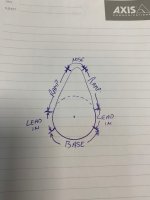I have just rebuilt my PRV 2995 cc V6 , useing a high lift long duration cam shaft , I set the tappets at the recommended clearance of .014 ( by the supplier of the cam ) , these setting result in a lot of tappet noise.
My question , is there a rule of thumb to calculate a suitable clearance based on valve size , length of valve stem , ramp angles etc that will be quiter but not harm the valves or rob me of too much horse power .
What are the pit falls in reducing the clearance too much ?
My question , is there a rule of thumb to calculate a suitable clearance based on valve size , length of valve stem , ramp angles etc that will be quiter but not harm the valves or rob me of too much horse power .
What are the pit falls in reducing the clearance too much ?

